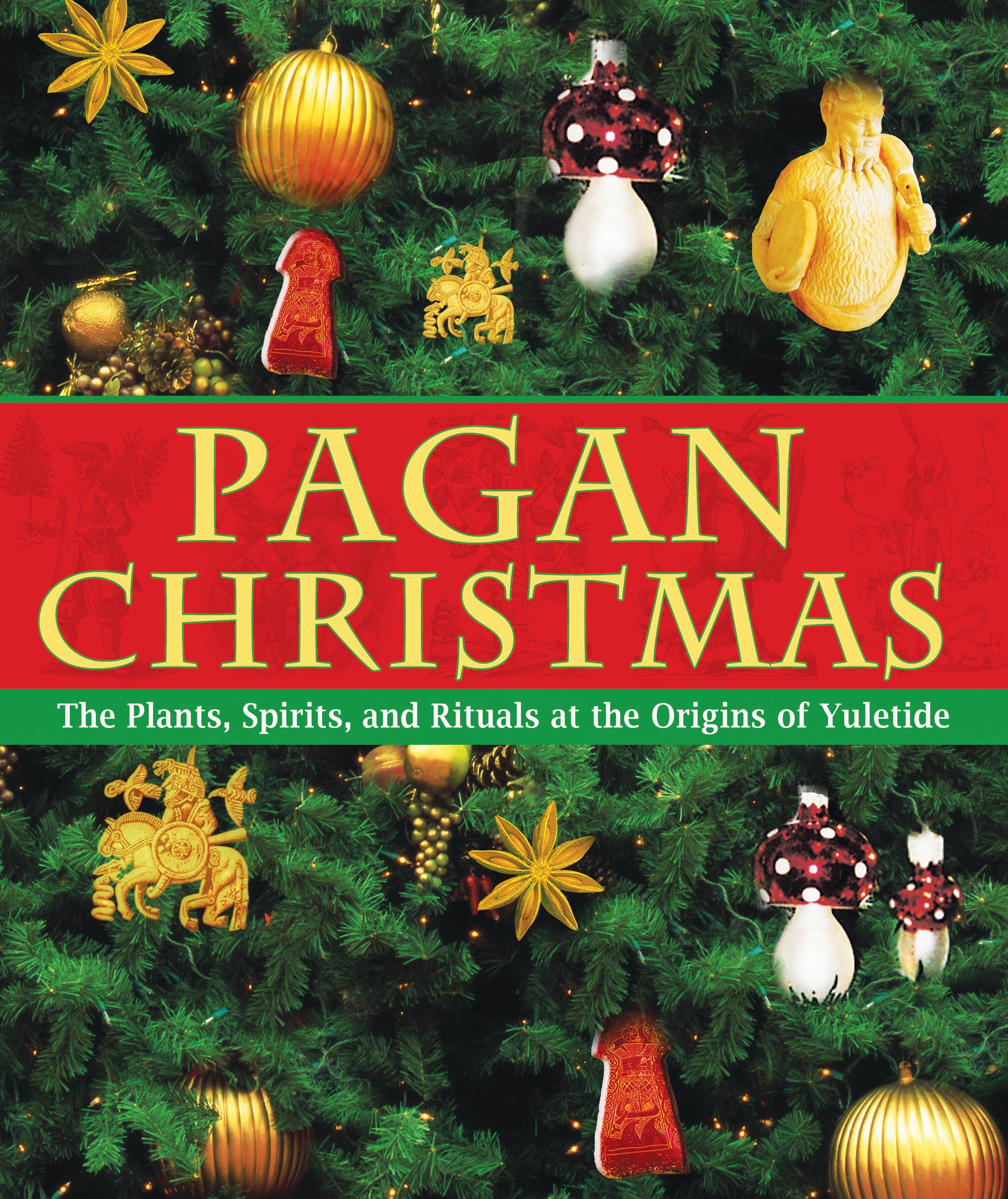
Christmas is a so called “Christian” holiday that is observed in commemoration of the birth of Jesus Christ. This festival is considered a religious as well as cultural holiday and is celebrated by billions of the earth’s inhabitants.
During the Christmas season, Christians and non-Christians send gifts to loved ones, acquaintances, and even strangers. However, this anniversary was not celebrated by early Christians, nor is there a decree to commemorate Christ’s birth.
Surprisingly, the word Christmas is not in the Bible. In his book, Mystery Babylon Religion (p. 142) , Ralph Woodrow writes:
“A look at the word “Christmas” indicated that it is a mixture. Though it includes the name Christ, it also mentions “Mass.” When we consider all the elaborate ceremonies, prayers for the dead, transubstantiation rites, and complicated rituals of the Roman Catholic Mass, can any truly link this with the historical Jesus of the gospels? His life and ministry were uncomplicated by such ritualism.
As Paul, we fear that some have been corrupted “from the simplicity that is in Christ” (2 Cor. 11:3) because of pagan influence upon such things as the Mass. Looking at it this way, the word “Christ-mass” is self-contradictory.
In his book, The Pagan Origins of Christian Holidays, Elisha J. Israel illustrates how the Roman Catholic Church, in a strategic effort to appeal to the pagans of Rome, fused the ancient Babylonian’s pagan customs and festivals of sun worship with the rites of the one true faith of the Bible.
The following expose from his book will give us further insight on the specific pagan customs and festivals of sun worship that were merged with Christian tenets to produce the traditions and current practices of Christmas.
We will find that the important date of Christmas as well as the rites, symbols, and figures associated with this festival actually predate Christianity.
On December 25th, A SUN is born…
As to the actual date of Christ’s birth December 25 is to be doubted. When Jesus was born, “there were in the same country shepherds abiding in the field, keeping watch over their flocks by night.” (Luke 2:8).
Shepherds in Palestine did not abide in the fields during the middle of winter!
Adam Clarke has written, “as these Shepherds had not yet brought home their flocks, it is a presumptive are you met that October had not yet commenced, and that, consequently, our Lord was not born on 25th December, when no flocks were out in the fields… On this very ground the negativity in December should be given up.”
Jesus’ birth was also at the time during which Caesar Augustus issued a decree that all the world would be taxed. This is the reason that Joseph took his wife, who was large with the child, to Bethlehem thus fulfilling prophecy (Luke 2:1, Micah 5:1-2). It would be imprudent for Caesar Augustus to require that Rome’s subject travelled to pay such a duty during the middle of winter.
One of the first recorded references to the date of Christ’s birth was made in approximately 200 A.D. by Clement of Alexandria who stated the following:
“There are those who have determined not only the year of our Lord birth, but also, but also the day; and they say that it took place in the 28th year of Augustus, and in the 25th day of (the Egyptian month) Pachon (May 20 in our calendar)… And treating of His Passion, with very great accuracy, some say that it place in the 16th year of Tiberius, on the 25th of Phamenoth [March 21]; and others say that on the 19th of Pharmuthi (April 15) the Savior suffered.”
Further, others say that He was born on the 24th of 25th of Pharmuthi (April 20 or 21). – Clement, Stromateis 1.21.145.
Apparently, there was no consensus regarding the birth of the Messiah. In addition, out of all the proposed birthdates of Christ, December 25th is not mentioned.
So, if the specific date of Christ’s birth is not stated in scripture, if the scriptural evidence we do have points us to an earlier time of the year, and if about two hundred years later the birth of Christ was a point of contention, how was December 25th chosen as the Savior’s birth date?
This date is perplexing unless one understand the significance of this specific date and the time surrounding the winter solstice for pagans. One must also keep in mind the Roman Church’s willingness to wink at and even encourage pagan practices and feasts to bring the heathens into the fold. In 274, Emperor Aurelian made the cult of Sol Invictus (“Invincible Sun”) an official cult in Rome. It is less clear if Sol Invictus was an entirely new version of the cult of Sol or a revival of the cult of Elagabalus.
Nevertheless, on December 25, the day of the winter solstice, of the same year Aurelian inaugurated a temple to Sol. (Chronography of 354). So, to supplant the worship of the “Unconquerable Sun” Pope Julius and Catholic leaders declared December 25th as the official birth date of Christ. In 336 A.D. we find the Catholic Bishops which reads, “25 Dec: natus Christus in Betleem Judeae.” – December 25th, Christ born in Bethlehem, Judea.
Saturnalia, Brumalia, & Mithraism
The Saturnalia was an ancient Roman festival that lasted for seven days (December 17-24). During Saturnalia roles were reversed. In honor of Saturn slaves are before, ruled over, and disrespected their masters. During Saturnalia gambling, drunkenness, and sexual licentiousness was prevalent. At certain times in history, Saturnalia also consisted of human sacrifice.
The “king” or “lord of misrule” of the Saturnalia was chosen from among the enemies of Rome by lots and dressed in the insignia of Kronos. He was forced to take part in gluttony and debauchery and then sacrificed at the conclusion of the festival. Saturnalia was capped by the Brumalia (December 25).
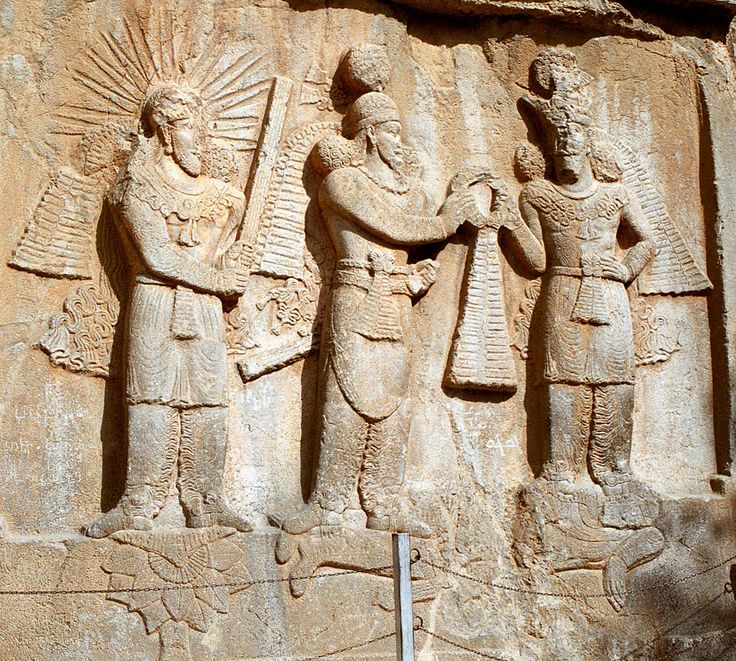
The birth of Mithras (Persian) was also celebrated on December 25th. In 354 Liberius commanded that Christ’ birth be observed on the 25th of December to counteract these observances. The names of these pagan festivals died but the spirit survived within the Christmas celebration. This is evidenced by the most popular Christmas rites and symbols (e.g. the suspension of work, feasting, gift giving, decking homes with evergreens, lighting candles, and caroling.
Christmas Symbols
Mistletoes
It is Christian tradition to hang mistletoe over doorways. The mistletoe is a parasitic plant that was considered sacred by the Druids. The ancient Druids believed that mistletoe possessed healing and magical powers. Pliny writes, “The Druids – that is what they call their magicians – hold nothing more sacred than mistletoe and a tree on which it is growing… Mistletoe is rare, and when found, it is gathered with great ceremony, and particularly on the sixth day of the moon.” (Pliny, Natural History, XVI, 95).
It was also believed that the plant possessed fertility attributes. The white berries symbolized the divine semen of God and the red berries of the holly represented the goddess’ menstrual blood. (Gerina Dunwich, Wicca Craft: The Book of Herbs, Magick, and Dreams {New York: Citadel Press, 1991), 35}). It is unclear of exactly when kissing under the mistletoe began; but it is probable that the custom is associated with the bough’s perceived fertility.
Yule Log
According to Babylonian tradition, Tammuz was the reincarnation of Nimrod. This process of death and reincarnation was represented by a log and a tree. The Yule log that was set ablaze represented the death of Nimrod. The next day a tree was used to symbolize the rebirth of Nimrod through Tammuz. Yule was a winter solstice festival that was also celebrated by the peoples of Northern Europe.
During Yule a log was meticulously chosen. Parts of the Yule log were lit for twelve days, and each day a different sacrifice was made. In honor of the Scandinavian fertility deity Yule pagans kept a log ablaze for twelve days. This is the precursor of the twelve days of Christmas between Christmas and Epiphany.
Christmas Tree

The Christmas tree is probably the most recognized Christmas symbol. But, since antiquity pagans have used trees that remain green annually as objects of worship. In Egypt, pagans decked their homes with palm trees during the time of the winter solstice in honor of Ra. In honor of` Saturn the Romans decorated their homes with evergreen boughs during Saturnalia.
Tree worship was even practiced in China. This custom was also practiced by coverts to Catholicism. The ecclesiastical writer Tertullian even complained that too many Christians decorated their homes as the heathens did during their festivals.
The modern Christmas tree tradition, however, derived from Germany. It is believed that the Protestant reformer Martin Luther began the tradition of adding lighted candles to evergreens. It was also the Germans who brought the custom to the Americas. However, many Americans viewed the Christmas tree as a pagan remnant.
Early Americans were correct in their assessment that placing a tree in one’s home is pagan.
Jeremiah writes:
Jeremiah 10:1-4
King James Version (KJV)
1 Hear ye the word which the Lord speaketh unto you, O house of Israel:
2 Thus saith the Lord, Learn not the way of the heathen, and be not dismayed at the signs of heaven; for the heathen are dismayed at them.
3 For the customs of the people are vain: for one cutteth a tree out of the forest, the work of the hands of the workman, with the axe.
4 They deck it with silver and with gold; they fasten it with nails and with hammers, that it move not.
Santa Claus

The mythical figure known today as Santa Claus has developed over a number of years and is a combination of figures such as the historical Nicholas of Myra, Sinterklaas, Father Christmas, the Germanic god Odin, as well as American commercialism. The inspiration of Santa Calus comes in part from the 4th Century Catholic bishop Nicholas of Myra (present day Demre).
According to legend, Nicholas was known for doing miracles and giving gifts to the impoverished.
Supposedly, his most generous act was providing dowries for young women that saved the from a life of prostitution. In some European countries, mainly Northern Italy and regions of Austria, gifts and sweet treats are distributed to children on St. Nicholas’ Day (December 6).
There are also obvious parallels between Odin and Santa. In Norse mythology Odin (Woden) is associated with magic, war, hunting, and is also the father of Thor. Prior to the rise of Christianity, when yuletide was widely celebrated it was believed that supernatural occurrences were widespread. One of these was the Wild Hunt. During this procession Odin rode an eight legged horse name Sleipner.
Sleipner is likened to the eight original reindeer of Santa due to his ability to leap across the night sky. (Initially, there were only eight reindeer. Rudolph the Red Nosed reindeer, the ninth reindeer, appeared for the first time in a 1939 booked written by Robert L. May that was published by Montgomery Ward).
In England there was Father Christmas. He was portrayed as a jolly large bearded man with green or scarlet clothing lined in fur, riding a goat, and assisted by elves instead of Krampus. When England abandoned the feast day of Saint Nicholas (December 6) the Father Christmas celebration was transferred to December 25th to coincide with Christmas.
In the English speaking world, Sinterklass, St. Nicholas, and Father Christmas merged. In the United States the word “Sinterklaas” was Americanized into Santa Claus, and first appeared in the American press in 1773 (Rivington’s Gazette (New York City), December 23, 1773).
Initially, his canonical attire was replaced with a green winter coat and he was depicted as a portly Dutch sailor. The poem “A Visit From St. Nicholas” (better known as “Twas the Night Before Christmas”) by Clement Clarke Moore solidified many of modern attributes of Santa Claus which include riding on a sleigh and landing on the roofs of homes, entering the chimney with a sack of toys, and reindeer named Dasher, Dancer, Prancer, Vixen, Comet, Cupid, Dunder, and Blixem.
The image of Santa as a rotund bearded man was popularized by the American cartoonist Thomas Nast in an 1863 illustration that appeared in Harper’s weekly. In the early 20th century images of Santa were used by companies such as White Rock Beverages. However, the Coca Cola Company has influenced the modern depiction of Santa a great deal.
For instance, the popular 1930’s Coca Cola Christmas depiction by Haddon Sunblom of Santa Claus donning red and white, is largely why Santa Claus is almost exclusively depicted today wearing these two colors.
Pagans, Not Jesus, are the “Reason for the Season”
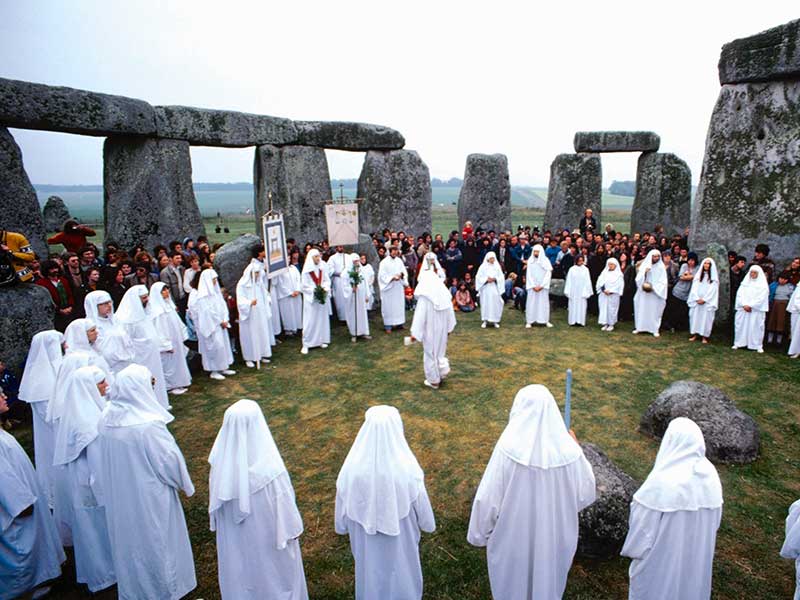
On December 22, 2015 the Huffington Post published an articled titled, A Merry Pagan Christmas! The article gave a detailed account of the pagan origins of Christmas. Here are few excerpts from the article:
Pagans, more-or-less by definition, are not Christians, so why would we celebrate Christmas? Well, followers of paths such as Druidry, Wicca, Heathenism, etc., mostly live in countries that are nominally Christian, and in which Christmas is a pretty big deal. So most Pagans celebrate Christmas in the same way that most Christians do, as a festival of consumerism, over-eating, family gatherings, gift-giving and office parties.
Pagans have deeper links with the season though. Virtually every part of Christmas has its origin in Pagan celebrations of Midwinter.
Christmas Day is on December 25th because that’s when pre-Christian folk throughout the Roman Empire celebrated the birth of Sol Invictus, the Unconquered Sun. In 274 CE, Emperor Aurelian promoted Sol Invictus as a god that all citizens of the Empire could worship alongside their own deities.
He combines aspects of other pagan gods, including Mithras, a Middle Eastern deity born to a virgin mother on December 25th. The birth of Christ was first celebrated on this day in 336 CE.

The original significance of the date is that, in the Northern Hemisphere, it’s the first day on which the sun’s rising position on the horizon begins to move northward following the winter solstice.
Our ancestors took the sun’s renewed movement as a welcome sign that there would be an end to winter and a return of warmth and growth. Hence they celebrated the rebirth of light, personified as a divine child.
Midwinter celebrations represented a metaphorical shaft of light in the depths of winter, when sources of food were limited and when cold, snow and frost ended many lives, particularly those of the frail, elderly and very young.
Celebration lifted the spirits, and feasting was a reminder of good times promised by the sun’s return, as were the exchange of gifts and the decorating of homes and temples with evergreen foliage.

As well as celebrating a Pagan Christmas, many modern Pagans also take part in ceremonies on the winter solstice, a few days earlier – December 22nd this year. The idea of celebrating the solstices originates with an English antiquarian, William Stukeley (1687-1765). He associated Druids with stone circles and was the first writer to note the summer solstice alignment of the Hele Stone with the centre of Stonehenge.
Welsh Druid revivalist, Iolo Morganwg (1747-1826) followed Stukeley in believing that Druids celebrated the summer solstice, then decided they must have celebrated the winter solstice too. Gerald Gardner, a member of the Ancient Druid Order, introduced the solstices into modern Wicca, or Witchcraft, which he and his coven created in the late 1940s.
The first historian to seriously examine the status of the solstices in Paganism was Ronald Hutton, Professor of History at the University of Bristol.
In his book, Stations of the Sun (Oxford University Press, 1996), he reviews the evidence for the celebration of midsummer and midwinter and concludes that our ancestors throughout history and everywhere in Europe celebrated a few days after the solar standstill when, as said, the sun’s rising position begins to move again.
That’s also why Midsummer’s Day is celebrated on June 24th, not on the summer solstice, which falls on or around the 21st.
In his book, The Pagan Origins of Christian Holidays, Elisha J. Israel gives a thought provoking conclusion to his expose on Christmas. He states:
“Christmas is undoubtedly rooted in paganism and those who observe (such) celebrations do so in error. Again, Jesus could not have been born on December 25th. The choosing of this day was a strategic maneuvre by the Roman Church.
Furthermore, even if Jesus was born on December 25th God never commanded that we commemorate his birth. The Christmas rituals, symbols, and figures are merely remnants of the pagan rituals, symbols, and figures of old. Even the word “Christmas”, which comes from the words “Christ” and “mass”, is erroneous because Christ never had a mass. The round wafer used during the Catholic mass is a symbol associated with pagan sun worship, which is actually at the root of the Christmas festival. Knowing all of this how can one possibly substantiate the observance of Christmas and simultaneously profess to be a follower of Christ?”
Purchase “The Pagan Origins of Christian Holidays” by Elisha J. Israel, here.
Download “Babylon Mystery Religion” by Ralph Edward Woodrow, here.
Read Huffington post article, A Merry Pagan Christmas, here.
Explore the pagan origins of other so called Christian holidays here.
Watch more on the truth behind Christmas Below:
“The Pagan Origins of Christmas” (presented by Elisha J. Israel)
“Actual Pagan explains stolen holidays like Christmas”

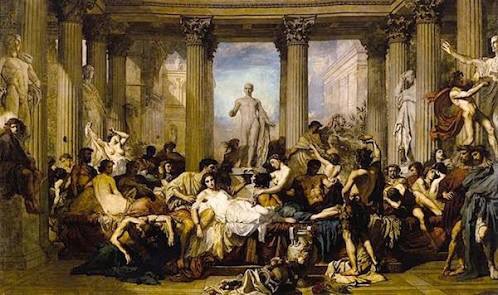

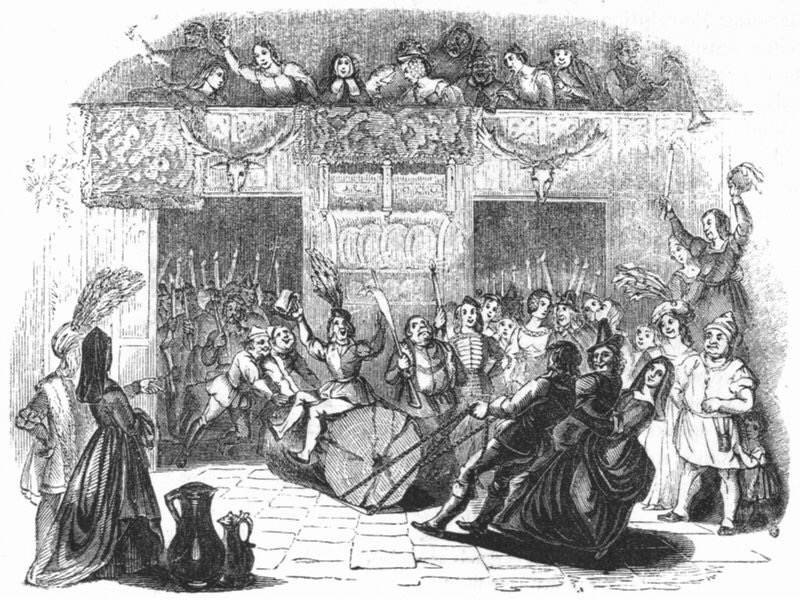
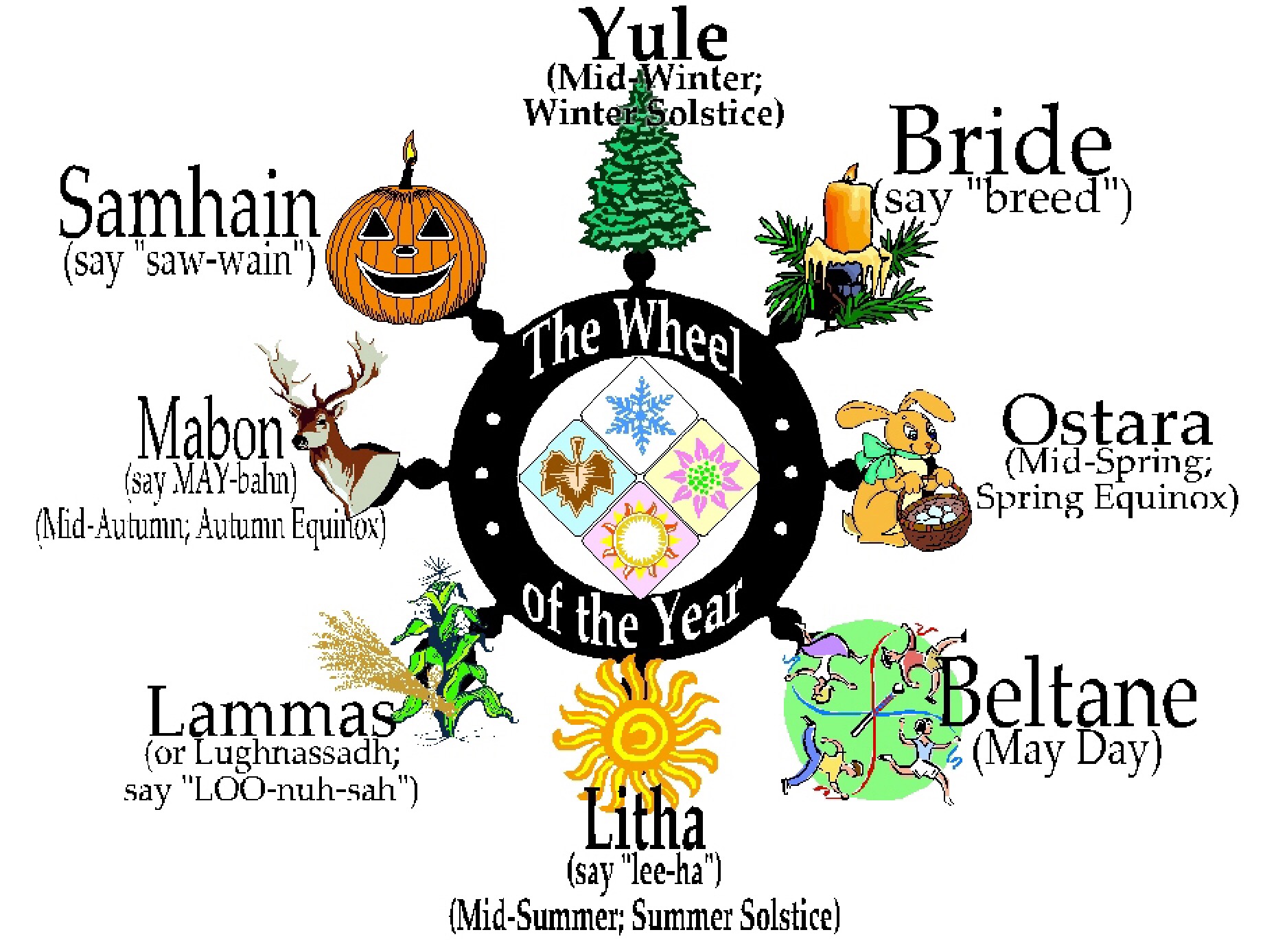
More Stories
PANDEMIC UPDATE: ISRAEL, THE CHURCH OF JESUS!
The Mark of The Beast
Pope prepares for Mark of the Beast with consideration of ‘universal basic wage’